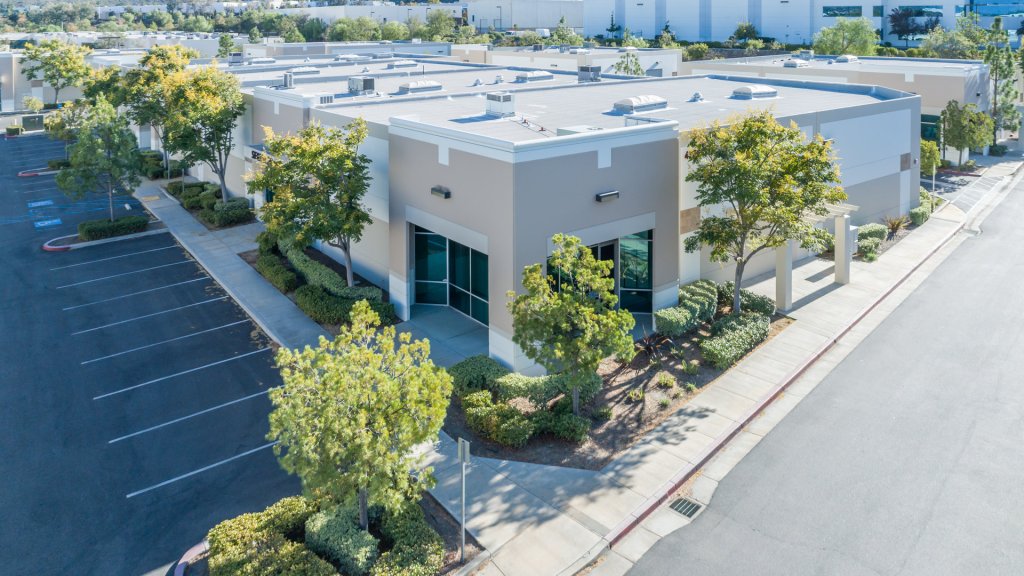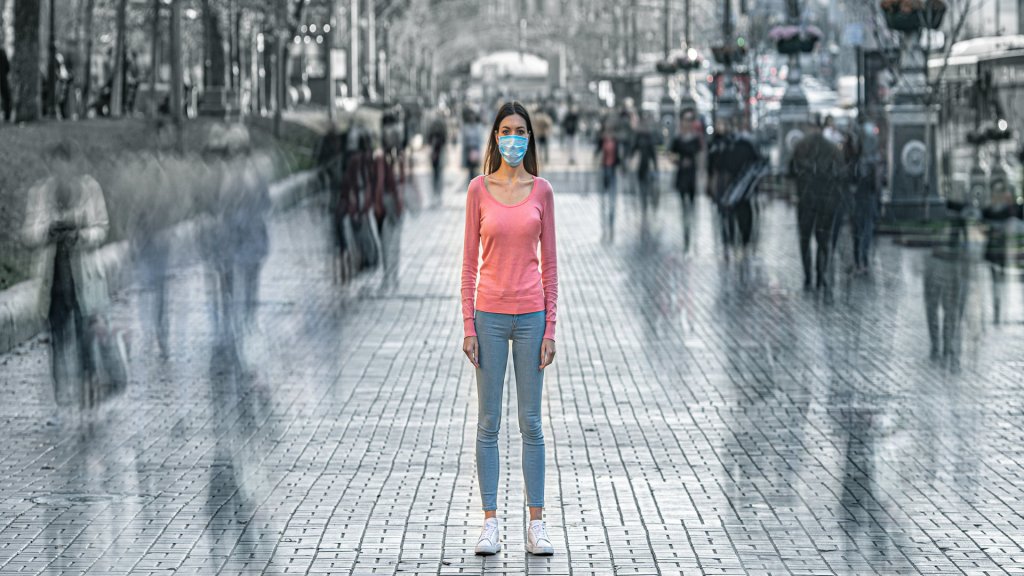Yardi recently partnered with the UKAA and Get Living to deliver a webinar which explored the effects that Covid-19 has had on the build to rent market. Yardi’s special guests from Get Living, Chris Armstrong, Brand, Technology and Experience Leader and Ian Gibbs, Director of Neighbourhoods, shared their experience on how brand, technology and operations have come together through the pandemic. Justin Harley, regional director at Yardi, kicked off the webinar by sharing some interesting technology trends that Yardi had collated throughout the pandemic. Harley highlighted that technology should be at the heart of any business as the need to be ‘digital-ready’ grows. The count of virtual tours, online applications and resident app downloads are at an all-time high, and data analysis from Yardi shows that resident app usage has doubled since lockdown. Underlying technology has become more essential than ever before. “Technology is a critical part of a business’s infrastructure, just like the physical foundations of any building” said Harley. He posed the question, “when we’re out of lockdown, will these tech tools stay crucial to businesses?” Are you Match Fit? The Get Living duo, Gibbs and Armstrong, scattered sporting analogies throughout the webinar as they compared their response to Covid-19 as becoming ‘match fit’. “We’ve been working on becoming ‘match fit’ for some time now. Gibbs compared Get Living as being ‘at times close to the top of the table’ before new opponent Covid-19 arrived, challenging the team in more ways than they were prepared for. Armstrong compared the Get Living team to being stood on the side lines, discussing the best tactics to take to win the match. He said their first step was to get the right people in the room and to talk it through about how to play...
Moving Forward
Downturn insight for multifamily
Yardi multifamily experts Dhar Sawh, Paul Yount and Patrick Hennessey went in-depth on how industry professionals can best prepare for what’s next in a helpful operational strategies webinar this week. Miss it? You can register for additional sessions here. The hour-long presentation featured both current economic data sourced from Yardi Matrix as well as key takeaways from Yardi’s Downturn Playbook, a comprehensive resource for meeting the challenges ahead. “When we saw COVID-19 hit the U.S. in March, we really saw (multifamily demand) plummet. But we are already seeing that demand bounce back. It’s bounced back, but it has definitely changed,” said Sawh, industry principal at Yardi. Find out more about national multifamily trends in the latest Matrix webinar recording. Preparing for success in the post-COVID-19 multifamily world will involve shifts in the way leasing and operations teams are used to doing business. Examples include: A virtual marketing and leasing experience, from start to finish. “It is critical prospects can get what they need to make a decision when they cross your digital threshold,” said Yount, industry principal at Yardi. That may mean activating aspects of your marketing website that you haven’t used before. Do you have adequate photos, videos and 3-D floor plans? What about the ability to chat live online with a leasing representative? Nudge marketing? Details about how your property has responded to coronavirus is another essential. And the need to fully execute a lease online is more important than ever – many prospects are now willing to consider signing without ever visiting a property in person. The opportunity to take a self-guided tour. Self-guided tours were already growing in popularity before the pandemic, but they now provide an opportunity for contactless viewing and will be likely more popular than ever moving...
Leading with Action
Yardi clients stand out
“Adversity does not build character. It reveals it.” Those words from James Lane Allen have resonated with readers for years. As we face challenges, our true nature is exposed. Yardi is proud to share the stories of several clients that have supported residents, built community and exercised leadership during this difficult time. Employee and resident support The Bridge Employee Emergency Support Initiative to Aid Employees Amidst COVID-19 details support services for team members. Bridge has offered to pay employees’ regular salary or hourly pay during their absence from work due to COVID-19 illness, self-quarantine, or to care for COVID-19-infected family members. The aid supports employees who can work remotely as well as those who cannot. This Initiative exceeds the requirements stated in The Families First Coronavirus Response Act for companies with less than 500 employees. It supplements current Bridge protocols regarding teleworking and enhances the organization’s protective measures for employees and residents. Bridge Investment Group multifamily residents are eligible for the COVID-19 Financial Hardship Assistance Program. Residents can contact property staff to negotiate a rent payment plan suitable for their financial condition. The plans may include deferrals, lease extensions, and renewal opportunities. Bridge will not pursue any evictions for the non-payment of rent during the crisis. “We do not want any resident to be concerned that they will be without a home during this pandemic,” states a recent Bridge press release. Hope through health and fitness To help residents cope with shelter in place practices, Bozzuto has introduced #BozzutoStaysHome, a virtual event series committed to bringing a sense of sanctuary to residents. “Sanctuary means many different things, but at the heart of it is a place where you feel at peace, where you can be yourself,” says Nicole J. Wells, content marketing manager, digital marketing and strategy with Bozzuto. “Prior to scheduling any activities, we first surveyed our residents to learn what topics were of true interest. Wellness and fitness were among the top areas. It’s natural that the place where you are at peace, where you can be your full self, would incorporate movement. Whether through dance, fitness or yoga, you are free to express and be,” says Wells. The #BozzutoStaysHome series emphasizes the importance of physical movement and fitness as a tool to release stress and maintain health. Sessions include yoga, functional movement, and dance resources. The multifamily housing provider also created the Flamingo 21-Day Virtual Wellness Challenge. Residents are encouraged to participate in home workouts. They can then post photos and encourage their fellow renters. Participants earn points that will be used to calculate rewards which include a party thrown by Flamingo—once shelter in place mandates are lifted– and year of free housekeeping services or personal training. In May, Bozzuto encourages residents to join A Wider Circle’s Virtual Race to End Poverty on May 16. Residents can sign up to exercise at a specific time to raise funds and awareness for A Wider Circle. The nonprofit focuses on emergency and long-term solutions for housing and food insecurity. Finding normalcy while sheltering in place Lincoln Property Company (LPC) has kept the atmosphere light by providing ways that residents can make sheltering in place feel more natural. Via social media, LPC shares content from their blog and sites such as Apartment Therapy to give residents tips on sheltering in place. Such resources include a guide to working from home, a list of the most versatile workout apps, bonding activities to do over teleconferencing apps, and quick meals for days when residents feel overloaded. The housing provider is also hosting the #LPCHomeTogether contest. Residents can submit pictures of how they’re making the most of their extended time at home. Submission ideas include pictures of DIY projects, workouts, and family games. Each week, LPC choses a winner who will receive a $50 Amazon gift card. LPC resident relief efforts include options for payment plans and other policies to lessen financial...
Compliance While Distant
Resources for affordable housing
The uncertainty caused by the COVID-19 pandemic affects affordable housing providers in many ways. Missed rental income, difficulty documenting residents’ eligibility and ensuring compliance with a suddenly remote team are just three of the challenges faced by the industry. Thankfully, there are assistance resources that can help alleviate the discomfort of change and uncertainty. Yardi is here to help Affordable housing providers have big concerns, and Yardi is committed to help. Here are some questions you may be asking, and follow-up answers from Yardi below: Q: Where can I get information about changing compliance requirements? A: Current Yardi clients can log into Client Central to watch a free webinar titled “How COVID-19 Changes Affordable Housing Compliance.” The recorded demonstrates ways to keep socially distant and while making sure compliance work gets done. Q: How can we accept applications or conduct compliance interviews when staff are working from home? A: It’s possible for households to complete their affordable housing application online, without having to bring paperwork to your office (which is likely understaffed or closed as employees are working from home). Yardi is offering a fast-track implementation of RentCafe Affordable Housing to current Yardi Voyager customers. Clients can be processing online applications and certifications in as little as two weeks. RentCafe Affordable Housing includes online portals for application processing, screening, move-in, initial, interim, and annual certifications, leading practice compliance forms, payment processing, maintenance requests, compliance reporting and more. The fast-track offer is currently limited to 50059 certifications. As we develop additional leading-practice workflows, we will include additional subsidy types. Q: How do you certify the eligibility of new and current residents when they can’t drop off forms and employers are closed? Your housing specialists can use RentCafe to review household, income, asset and expense data submitted through the online applicant portal. Applicants and residents can upload images of bank statements, paychecks, and any other required eligibility documentation. The online interface enables your compliance team to collaborate, even as they work individually from home offices. Q: How can I implement RentCafe when most of our team are working remotely and have limited to no time available to complete the setup of the software? We understand current circumstances may make implementing any new software or processes challenging. To overcome this, we have developed a streamlined guided implementation approach featuring our leading practice certification workflows and forms. As your partner, Yardi will take the lead to complete the necessary configuration and setup and provide remote webinar training and support for your teams enabling them to start using RentCafe Affordable housing in as little as two weeks. Learn more by downloading a free ebook called Five Steps to Revolutionize Affordable Housing Applications and Workflows. Another way to bolster income certification data is to use social service verification screening from Equifax®. That service delivers applicant and resident payroll data, year to date income reports and more as part of the applicant screening and annual recertification processes. Affordable housing providers using Yardi’s ScreeningWorks Pro can access social service verifications on the Yardi Voyager and Breeze dashboard. Q: How do we process rent deferrals? RentCafe includes a new feature that facilitates rent deferrals and doesn’t require in-person meetings. Residents can log into RentCafe to see what options they have for rent deferral, see how a deferral affects their account balance, and keep up to date with changing policies. Watch a free webinar and see how this new rent deferral feature works. Q: How Does the CARES Act support affordable housing? A: The CARES Act includes legislation that offers relief for property owners experiencing reduced revenue from missed rent payments. Specifically, the CARES Act identifies the procedures landlords can take to keep their properties viable despite financial hardships caused by COVID-19. It addresses forbearance of mortgage payments, temporary eviction moratoriums, and more. Now more than ever Affordable housing is a vital resource for communities across the country. As...
Varying Impacts
Yardi Matrix Commercial Outlook
Yardi Matrix continued its series of comprehensive market impact webinars on May 13 with an in-depth look at the state of the commercial real estate industry, presented by Jeff Adler, vice president of Matrix, and Rob Teel, senior vice president of global solutions at Yardi. Both provided data and insight into the crucial question Adler introduced at the start of the session: How do we move forward, past the lockdown and into the recovery phase? “Despite the herculean efforts by the federal government to keep businesses afloat, there is still more pain to come,” Adler said. And for each sector of commercial real estate, the road ahead will look different. Optimistic outlook for industrial Across all real estate sectors, industrial and multifamily are holding up best during the COVID-19 pandemic. “They were also the two best performing sectors before this hit,” Adler noted. April rent collections for industrial averaged around 86-87 percent, so the sector is not entirely immune to nonpayment, but looks good compared to retail. Dependence on e-commerce for home-delivered supplies and other purchases has helped industrial stay stable. In some smaller markets ideal for last-mile delivery siting, industrial rents are even edging up. There’s also newfound demand for cold storage due to changes in the grocery market. Office holding up, but changes expected All things considered, “office is in pretty good shape,” said Adler. “Though coworking is hurt pretty bad.” April collections of office rents were in the 85 percent range, and are expected to stay high for buildings with large, well-capitalized tenants. Office may see significant changes as states return to work, however. Concern looms for office hubs like New York City, where dependence on public transit and crowded elevator rides in skyscrapers are both hard to reconcile with ongoing social distancing requirements. “There is going to be a rethinking of the footprint. How much physical space and face to face contact do you need to keep (corporate) culture together?” Adler asked. Teel noted that there has been a spike in interest in serviced, suburban office space from firms who want to return workers to the office but in a less congested setting. And coworking is likely not dead, but will have to return either long-term or with major changes to accommodate social distancing needs. A rough road for retail “This is where the carnage is,” Adler summarized bleakly. “And for retail, the snapback is not likely to happen anytime soon.” April rents were paid by around 45 percent of retailers, and May is expected to be far worse. Major retailers like J.Crew and Neiman-Marcus have already declared bankruptcy, although in some cases the pandemic merely sped up a predetermined outcome. Brick and mortar stores were already struggling with online competition well before the pandemic. “We are social animals, we will gather again, it will just take a bit of time for it to happen. And there will be pain in the sectors that depend on the gathering of people,” Adler said. Grocery-anchored retail continues to outperform, but is still taking a hit due to closed secondary tenants. For more in-depth information on the state of the commercial real estate market, view the latest Yardi Matrix report. Yardi observes latest CRE technology trends Teel delivered an overview of the tech requirements that commercial owners and managers are now finding to be essential in today’s changed world. Accounts receivable tracking for deferrals and concessions is crucial, as is accurate documentation and tracking of tenant status. Yardi will soon introduce a new CRE tool, LeaseManager, to help with that. But perhaps the biggest tech shift will be a paperless push. It will help CRE improve contactless business practices like vendor invoicing and electronic payment fulfillment. “This is one area that’s overdue for disruption and change and it’s happening now,” Teel said. He estimated that physical checks still make up 90 percent of the payments that Yardi clients...
Multifamily Outlook
Continuing fallout from COVID-19
Yardi Matrix continued its series of comprehensive market impact webinars on May 6 with an in-depth look at the state of the multifamily industry, presented by Jeff Adler, vice president of Matrix. “We are just beginning to see some of the ripple effects (on multifamily), and now the discussion has shifted to how we recover and move forward,” stated Adler at the outset of the session. Nearly 1100 real estate professionals tuned in for the 90-minute session. A similar presentation with a focus on the commercial real estate sector is set for Wednesday, May 13. You can register here. Attendees report that the Matrix webinars are invaluable for keeping a finger on the pulse of the rapid changes that continue to impact the industry. Here are some of the key takeaways from the multifamily impact webinar. Listen to the full presentation to see data points and comprehensive slides. So far, the multifamily industry is holding up well. April rent collections were excellent, only off a few single digit points from prior months, said Adler. It’s expected that trend will continue at least until August. Leasing season has resumed and many properties with availability are seeing more interest than expected, according to anecdotal reports from industry contacts. Data from Yardi’s RentCafe online leasing service shows a marked uptick in views of online apartment listings over the last month. The economic recovery is expected to be partial and slower in some states than others. This will impact all industries, and multifamily will likely continue to see household consolidation as renters move in with friends or family members to try to keep costs down. For new leases, concessions offered by owners and managers will be an important indicator of market performance trends going forward. Population trends will...
Price is Right?
Revenue Management Now
Are you thinking about fine tuning your revenue management program to meet the challenges of COVID-19? The current market is impacting demand and pricing, and it’s time to consider new strategies for managing your assets with both a short- and long-term focus on collections and occupancy. As some states are already planning to open up within phased approach guidelines, Yardi Matrix data shows that demand is bouncing back from an initial drop of about 30% during the first two weeks of March. Plus, move-outs have slowed down. Looking at data collected from 11.5 million apartment units, April collections were better than expected according to the NMHC Rent Payment Tracker which showed 84% of apartment households made full or partial rent payments by April 12 and 91.5% by April 26. While that’s good news, the coming months are a bit unpredictable due to growing unemployment and delays for many people in getting their benefit payments. “It is encouraging that apartment residents continue to meet their rent obligations whether that’s with the support of the federal relief funds, credit cards and alternative, flexible options provided by the industry’s owners and operators,” said NMHC President Doug Bibby. “But their financial security is unclear as many may not qualify for federal relief, while others are drawing down savings and facing greater financial challenges, including higher health care costs. For that reason, lawmakers need to act now to enact a direct renter assistance program.”* One growing trend is undeniable: leasing has shifted online, so be ready to handle more virtual traffic to your properties. Your revenue management strategy should adapt smartly to these changes in demand and interactions. Many initially thought a lockdown on rental pricing increases made sense but could be a knee-jerk reaction. There’s more to...
Leaving Cities
Weighing options due to COVID-19
Anabelle Strauss grew to love the Mission District of San Francisco. As a data scientist, she enjoys the balance of living in a neighborhood of creatives. Her apartment is nestled amid an array of local grocers, international restaurants, and small businesses that are also appealing. But as COVID-19 swept through the city, much of what she loved about the area changed. Her tech job allowed her to work comfortably from home two weeks before the governor issued a shelter in place edict. But then the local shops closed, some temporarily while others were less fortunate. Her cozy apartment began to feel claustrophic. She yearned for outdoor access that she didn’t have. What’s worst, she felt that the shared ventilation system in the apartment building caused her illness. “I was sick for a while, likely COVID,” Strauss says casually. “All the neighbors coughing constantly, I think I contracted it inside the apartment. It was a milder form, so it wasn’t that bad, but it affects my cognitive ability and there is lung pain. It’s been one-and-a-half months now.” Now Strauss, like many other Americans, is looking to escape the congestion on urban life. Her interview took place over the phone as she drove to the suburbs to tour a single family home. “A detached home would be nice. The more detached the better,” she laughs. “It would be very nice to get some outdoor space.” The quiet exodus The transition from cities to suburbs has been happening quietly for years now. The COVID-19 pandemic shined a light on the shift and brought a few newcomers onto the moving truck. Many wonder, though, if the suburbs create a false sense of safety. It’s a misconception supported by legislators nationwide. New York Gov. Andrew Cuomo has accused density of spreading the virus more rapidly. “Why are we seeing this level of infection? Well, why cities across the country?” he asked reporters during a news briefing. “It’s about density. It’s about the number of people in a small geographic location allowing that virus to spread. … Dense environments are its feeding grounds.” In an effort to not be consumed by the respiratory infection, those who can seek refuge in less densely populated towns are doing so. Austin, Nashville, Asheville, and a spattering of towns in Texas and South Florida have experienced a spike in new residents. The problem: research doesn’t support the theory that densely populated cities increase the likelihood of illness. The facts: policy—not space—protects residents Some of the most densely populated cities in the world have successful mitigated COVID-19 spread. Decisive, proactive policy coupled with community adherence has led to success in ways that space alone cannot. Tokyo, Vancouver, and Seoul exemplify that population density does not correlate to an increase risk of illness. Vancouver, which is more densely populated than New York, has had a fraction of the illnesses and deaths per capita, reports Joe Cortright, director of The City Observatory in New York. Conversely, less populated areas like Cynthiana, Kentucky and Fairfax County, Virginia have a disproportionately high number of cases per capita. “I think that’s one of the lessons here: With information and smart policy, there’s no reason why cities are inherently going to be hit harder,” observes Cortright. So why are people still leaving the cities? While less populated towns can’t offer refuge from a pandemic, people like Strauss still want to leave the cities for the sake of their mental health. “Even before COVID, all the face-to-face time in the city extracts energy. It takes a toll. It’s draining,” she says. “And the neighborhood that I live in, I think it’s becoming more dangerous. Those are other reasons to look for something new. And I think I may just like more space, more green space, if the price makes sense.” Strauss plans take her tech job with her to her new location. COVID-19 highlights just...
What’s Ahead for Energy
2020 and Beyond
The U.S. Energy Information Administration, the U.S. Department of Energy’s statistical and analytical agency, provides annual projections for U.S. and world energy markets over the next 30 years. Highlights from the latest release: Overall U.S. energy consumption will grow more slowly than gross domestic product as energy efficiency continues to increase. Purchased electricity consumption will increase by 0.6% and 0.8% annually in the residential and commercial sectors, respectively, due to increased demand for electricity-using appliances, devices and equipment. In 2019, 44% of residential light bulbs were LEDs, the most efficient light bulb technology available, and 17% of commercial lighting service demand was met by LED bulbs and fixtures. By 2050, these shares will reach 90% and 88%, respectively. Energy-related CO2 emissions decrease initially then rise closer to 2050 as economic growth and increasing energy demand outweigh improvements in efficiency. After initially falling, total U.S. energy-related CO2 emissions will grow modestly in the 2030s, driven largely by increases in energy demand in the transportation and industrial sectors. Emissions in 2050 will still be 4% lower than 2019 levels. Increases in fuel economy standards will drive a 19% decrease in U.S. motor gasoline consumption through 2050. The U.S. will continue to export more petroleum and other liquids than it imports as domestic crude oil production continues to increase and domestic consumption of petroleum products decreases. Renewables/biofuels Renewables will be the fastest-growing source of electricity generation due to continuing declines in solar and wind capital costs coupled with federal tax credits and higher state-level targets. Total renewable generation will exceed natural gas-fired generation after 2045. Without distributed generation sources, particularly rooftop solar, electricity consumption in residential and commercial buildings would be 5% and 3% higher, respectively, by 2050. Generation from renewable sources will rise from 18% of total generation in 2018 to 38%. Solar photovoltaic (PV) will contribute the most to the growth in total renewable generation, increasing from 13% in 2018 to 46%. Although onshore wind generation will more than double, its share of renewable generation will go from 37% to 29%. The U.S. will add 117 gigawatts of new wind and solar capacity between 2020 and 2023. Electricity is the fastest-growing energy source in the transportation sector, increasing by an average of 7.4% per year as a result of increased demand for electric light-duty vehicles. While gasoline vehicles will remain the dominant vehicle type through 2050, the combined share of sales from gasoline and flex-fuel vehicles (which use gasoline blended with up to 85% ethanol) declines from 94% in 2019 to 81% because of growth in sales of battery electric vehicles, plug-in hybrid electric vehicles and hybrid electric vehicles. The percentage of biofuels (ethanol, biodiesel, renewable diesel, and biobutanol) blended into U.S. gasoline, diesel, and jet fuel will increase from 7.3% in 2019 to 9% in 2040. Commercial and industrial space Total delivered energy consumption in the U.S. buildings sector will grow by 0.2% annually as energy efficiency improvements, increased distributed electricity generation and regional shifts in the population partially offset the impacts of higher growth rates in population, number of households and commercial floor space. Lower costs and energy efficiency incentives will result in efficient LEDs displacing linear fluorescent lighting as the dominant commercial lighting technology by 2030. Commercial PV capacity will increase by an annual average of 3.4%. Residential space S. total delivered residential energy intensity, defined as annual delivered energy use per household, will fall by 17% between 2019 and 2050 as the number of households grows faster than energy use. Factors contributing to this decline include gains in appliance efficiency, onsite electricity generation (e.g., solar photovoltaic), utility energy efficiency rebates, rising residential natural gas prices, lower space heating demand and population shifts to warmer regions. Residential PV capacity will increase by an average of 6.1% per year, accelerated by rising incomes, declining system costs and social influences. Learn how Yardi software can increase energy efficiency...
Fresh Features
For Yardi Senior Living Suite
Throughout the year, we’re talking to clients, developing features, squashing bugs and upgrading usability. Once everything’s been tried and tested, we bundle the improvements together for a new release. Well, that time has come. We’re excited to announce that Yardi Voyager Senior Housing 7.12 is now available. From new permissions and shortcuts to reports and features, you’ll find a lot to explore. Here’s a rundown of the enhancements added across the Yardi Senior Living Suite: Yardi Voyager Voyager received a variety of simple but meaningful improvements. Among them, you can now record your residents’ preferred names in Voyager. These nicknames will then show up throughout the system on your census records, resident ledger and elsewhere so your staff always know how to refer to your residents. Here are the rest of the updates at a glance: New data fields for a unit’s floor and building Shortcut links for maintenance services Faster access to work order information Watch the overview video Read the Voyager new features guide Yardi Senior CRM Senior CRM had quite a few updates in the Senior Housing 7.12 release. One of the biggest, you can now switch lease types during the leasing workflow. So if one of your communities is still under construction, for instance, sales staff can easily start a pre-lease agreement, rather than your standard template, for prospective residents. Other highlights include: New email opt-in/opt-out tokens Lead score enhancements Email notifications for scheduled activities Linking for duplicate records Watch the overview video Read the Senior CRM new features guide Yardi EHR EHR saw changes in task scheduling to add flexibility and save time for shift managers. A new scheduling column now shows when a caregiver is busy with a task, and you can easily update the schedule from the...
Canada Cares
PMs Support Residents During COVID-19
This period of unexpected hardship has also sparked unprecedented acts of support and compassion. Several Yardi clients in Canada have stepped up to support their residents and communities through financial assistance and emotional support. Shiplake Properties: help during hard times In the throes of COVID-19, Shiplake Properties has launched several initiatives to support residents, essential workers, and the community. Residents of Toronto-based Shiplake Properties Ltd may qualify for credits toward rent increases and $250,000 in gift cards. If experiencing extreme hardship, the firm encourages residents to discuss their situations with property management using a designated email address. Additionally, the property management and development firm has offered $100 in UberEats gift cards or grocery gift cards to support residents and local businesses. For the community, Shiplake Properties founders allotted $250,000 to support University Health Network emergency staff. The funds help cover accommodation costs to support frontline workers who are staying in hotels to be closer to work and minimize exposure to families. The real estate firm also plans to support both Sinai and Sunnybrook Hospitals and The Daily Bread Foodbank in coming weeks. Greenrock Properties offers relief from duress Greenrock Property Management announced a $500K COVID-19 Relief Fund for residents and staff facing financial duress during COVID-19. The property manager has deferred all rent increases for residents. They are also offering flexibility on rent payments, such as allowing residents to use March rent deposits as credits towards April rent payments. For help beyond housing, residents will receive a $100 grocery card. Greenrock Property Management outreach extends into the neighborhoods in which they operate. The real estate firm has donated $300,000 to local nonprofits that aid families affected by COVID-19. “COVID-19 has created unique and extreme challenges for our city and communities. GREA through its Greenrock Charitable Trust has pledged $300,000 towards local charitable organizations to address concerns surrounding food security, mental health, domestic abuse, and senior care during this crisis,” states a press release. Northview uses creativity to spark hope Emotional support can also help residents thrive. To encourage social distancing while nourishing mental wellness, Northview Apartment REIT hosts Social Distancing Balcony Parties. Residents are encouraged to get outside, get creative and create a much noise as possible in support of frontline workers. The first events took place on April 5th and 15th. Residents decorated their balconies and honored frontline workers with noise makers. Whistles, pots, pans, cheering and more could be heard resounding throughout the community. Residents submitted images and videos of their parties for a chance to win $500 rent discounts. Northview matches the discounts with $500 donations to the local food bank. Northview plans to host similar events each week. Additionally, Northview has encouraged residents to paint rocks with uplifting and encouraging messages. Residents have created messages for health, happiness, and support of frontline workers. Creativity contests with CLV Group Ottawa-based CLV Group invites residents to think out of the box and show their creativity on social media. Residents are challenged to create and document visible rainbows throughout the property. To date, residents submitted rainbows using yarn, chalk, balloons, prisms, construction paper, Leggos and more! Participants vote on their favorite submissions and the winners receive grocery store gift cards. CLV Group is also publicly acknowledging their essential workers each week with the Home Heroes series on social media. CLV photographs employees executing their essential tasks throughout the property, accompanied by a brief bio. The comments are filled with messages of gratitude and encouragement. To support prospects, CLV offers rent discounts, lease concessions and free move-ins offers. Prospects can take advantage of a contactless leasing process that promotes health, efficiency, and convenience. Explore more corporate social responsibility initiatives by Yardi...
Gold Diggers
Finding Energy Savings
In 2019, hundreds of organizations including real estate firms used Energy Treasure Hunts to reduce energy use by up to 15 percent and they’re hoping for even more participation in 2020. As explained on the ENERGY STAR® website, Energy Treasure Hunt teams walk around facilities looking for quick ways to save energy. Those fast fixes can add up to big savings, which is like finding buried treasure. Companies from various industries participated in the inaugural year’s Energy Treasure Hunt including AMLI Residential, Bozzuto Management, Colgate, Allergan, Kilroy Realty Corporation, Columbia Association, Boeing, Lockheed Martin and Nissan. For multifamily and commercial real estate operators, the Energy Treasure Hunt checklist, called a Treasure Map, includes a detailed audit of lighting, building envelopes (inspecting all doors and windows for gaps and damage), equipment and plug loads and HVAC systems. Using energy efficient lighting, improving insulation and managing power usage proved to be a few easy ways to save money, and thousands of dollars in potential annual savings were uncovered. Here are some highlights: Kilroy Realty Corporation found a potential annual savings of $20,300. Top savings opportunities identified: Retrofit the exterior lighting in all parking areas Retrofit lighting in all indoor common areas Conduct retro-commissioning For AMLI Residential, the audit revealed a potential annual savings of $7,800. Top savings opportunities identified: Implement checks to ensure correct set points in vacant and common areas Insulate hot water heater supply piping within the HVAC closets Use power management setting on business center and leasing office computers Bozzuto Management Company discovered a potential savings of $10,190. Top savings opportunities identified: Implement LED retrofits Install lighting controls and sensors Establish thermostat setting standardization While identifying precise dollar amounts in potential savings is exciting, even before an Energy Treasure Hunt most companies realize...
Real Estate Design
Pandemic Mitigation in Housing
Shelter in place practices have made an impact on every industry in America. Multitenant industrial and retailers grasp to make rent while grocers, tech, and delivery firms thrive. We naturally attach value to such changes. Real estate and its design, however, are neutral reflectors of social shifts. Like events before it, COVID-19 is the next big thing to change the face of housing. But first, let’s look back at other shifts that have changed the way that we live. We’ve seen this before – sort of Major social and economic events directly impact that way that we design and inhabit real estate. Following the wreckage of the Great Depression, President Franklin D. Roosevelt’s New Deal propelled the development of interstates and suburbs. Subdivisions sprang up, dispersing families into nuclear households. By the mid-1940s, middle class workers’ commutes prompted the addition of built-on garages. With the cheap suburban lots, greater car affordability, and adequate employment rates of the 1960s, many families opted for large houses with two-car garages. Fast forward to the economic prosperity of the 90s. Middle class and affluent Americans indulged in spacious homes with open floor plans. Multifamily construction boomed, answering demand from young adults who struck out on their own. Most formed their own households after graduation. In 2005, only 19% of college graduates lived with or moved back in with their parents, reports MarketWatch. The Great Recession ended lavish living for most Americans. Homeowners and investors struggled with mortgages, inundating the market with foreclosures. As the Great Recession dragged on, multitudes of seniors moved in with their adult kids. The number of recent graduates moving back into their parents’ homes jumped to 28% in 2016. The nuclear households of the 50s-90s began to disappear. Multigenerational housing reemerged and real estate changes followed soon after. Coming full circle to multigenerational housing with a twist Around 2012, multigenerational housing became the “new” trend in single family real estate. Though multigenerational households were the standard for thousands of years, modern multigen housing offered greater privacy. Finished basements with separate entries increased in popularity. Homes with two masters on the main floor thrived since they could support the homeowners as well as their aging parents. In price points that accommodated larger lots, young adults or in-laws lived in detached suites that shared mortgage and utilities costs. Young adults who would not or could not move in with family weathered the hard times in their apartments. Roommate floor plans were hot, especially when equipped with equally-sized private bedrooms and en suite bathrooms. Young adults postponed homeownership. Green building reasserts itself As the world shrugged off the burdens of the Great Recession, many eyes shifted to the next big thing in sustainable housing. Urban infill properties and mixed-use buildings brought residents closer to the businesses and services they used most. As a result, both classes reduced transportation pollution and costs. Between 2010-2019, tiny houses, micro apartments and co-living blossomed as way to reduce housing costs and environmental impact. Inside of their homes, residents implemented artificial technology to promote conservation and cut costs. Smart thermostats, lights, and appliances have become more commonplace. In addition to saving money and resources, residents crave greater control of our homes even when we were outside of it. Little did we know that we be spending so much time at home in 2020. COVID-19: the death of open floor plans? March 2020 marked sweeping shelter in place practices throughout the US. The sustainable measures of the past decade helped to decrease housing expenses, but other real estate changes are being reevaluated. Residents of mixed-use and infill properties are feeling the pain of stay at home policies. Public green spaces are closed and few units have more than a balcony for access to the outdoors. Psychologically, being surrounded by closed businesses isn’t reassuring. Smart home tech comes with benefits and disadvantages during the COVID-19 lockdown. The conveniences that...
Sewing Support
For Health Care Workers
It’s tough times like these where the best in people comes to light. In New York, which has emerged as the coronavirus epicenter, one family is doing all they can to support their community. Nancy Nix runs a small sewing business, Wicked Stitches, that closed its doors last month due to the pandemic. But she wasn’t willing to just stand by as the virus spread. An opportunity to help soon came. Her daughter Julia, who serves as a nurse on a COVID-19 floor, asked for surgical caps for herself and her colleagues. So Nancy Nix, whose husband Richard works on the Yardi senior living team, found a pattern and began sewing together with Julia. “People are putting themselves at risk, so you want to help,” said Nancy. “It just feels good to be part of the solution.” After finishing and delivering the first batch, requests for more quickly followed. In the weeks since, they’ve sewn hundreds of caps and face masks for hospital staff. The nurses appreciate the protection, and as a fun bonus, the colorful patterns make it easier to recognize each other when in full uniform. As the requests grew, Nancy spread the word about their project, and dozens responded offering to help sew. Even more have asked how they can support the cause. Wicked Stitches isn’t taking donations, but those interested in paying it forward can purchase and personalize caps for a health care professional. They can also buy rainbow door hangers, an increasingly common show of support for essential workers. Proceeds from both products go towards producing more caps to...
Unusual Impacts
Of the COVID-19 crisis
Trash volume at apartment communities during the COVID-19 crisis are showing a 30 percent to 35 percent increase nationally, according to Camden Residential, a REIT that operates 165 properties across the country. Its Director, National Purchasing, Rick Pippin says everything except for cardboard has increased. And although residents are certainly ordering plenty through Amazon, he says, because no one is moving out during this national shelter-in-place environment the residents aren’t generating a noticeable increase in box disposal. His waste haulers typically charge $150 in overage fees each time a bin exceeds the level, but Waste Management, for one, has waived those fees through May in response to the unusual circumstances. “We have as many as 25 bins at some properties,” Pippin says. “This is saving us about $8,000 per week in expense. Waste Management also has not been enforcing some recycling contamination fees, so we’re kind of getting a mulligan on that, too. Every little bit helps.” Camden has trash compactors at 100 of his communities, so overage is not an issue for those. But for the other properties, his residents and onsite trash-pickup service providers, who provide doorstep trash pick-up five or six or times a week, he says he’s seeing overflow in the bins nearest to the buildings. “The bins way in the back of the lot aren’t seeing waste piled as high,” Pippin says. “I’m fighting with those who carry the trash to the bins to even it out, telling them to walk a bit further before dumping, but there’s only so much you can do.” Camden uses Waste Management at 70 percent of its communities, and uses Republic, among others, elsewhere. “I’ve not been notified of any fee discounts by my other waste haulers, but I’m still waiting for the...
Stellar Remote Work
6 Pro Tips
Shelter in place practices have driven most organizations to explore remote work environments in greater depths. This new terrain presents unique challenges and opportunities. A common challenge is promoting unity and engagement amongst employees during an undetermined period of isolation. Below are six tips to drive employee engagement and productivity among remote workforces during COVID-19. Connect with tech There are numerous tools that make remote communication an effortless part of any workflow. Microsoft Teams, Zoom, and Slack are popular options for keeping employees connected. Each offers chat, voice, and video services suitable for duos and small groups. Yardi uses Microsoft Teams and GoToMeeting to promote engagement for groups of all sizes. When employees must share documents, graphics and other media, Robohead facilitates team and inter-departmental project planning. Reach out regularly Encourage consistent connection between team members and leadership. While managers and executive staff may not attend every meeting, weekly or bi-weekly meetings with leadership can help employees feel better connected to the health and vision of the company. Since taking 80% of its employees remote, Yardi has shifted from annual executive meetings to weekly “Global Town Hall” meetings. Some of these virtual gatherings are live, and others are pre-recorded. Each offers employees an opportunity to learn from leadership, explore the company’s response to COVID-19, understand client feedback, and connect with other teams. Find time for fun Attempt to replicate the ambiance of the “water cooler” or staff lounge. This is a space where employees share non-work-related news, participate in fun team-building activities, and relieve stress. Yardi client Lincoln Property Company features several remote work tips on its blog. A recent post on long distance activities to enjoy at home offers suggestions on ways to promote employee camaraderie at a distance. For example, consider hosting...
Pandemic Positivity
Senior living gets creative
Social distancing has changed the daily routines for countless people, but for those in senior living communities, it’s been especially hard. Visitors are no longer allowed, and residents are encouraged to stay secluded in their rooms out of safety concerns. For a population already prone to isolation and loneliness, these restrictions are more than just inconveniences. They’re health risks. Thankfully, senior living residents aren’t as alone as they might think. Social media feeds are awash with outpourings of support from the public. And the positivity isn’t limited to just sidewalk art or handwritten letters. Community staff and family members across the country are taking incredible steps to raise the spirts of their residents. Check out these creative examples of senior living fun in the face of COVID from some of our own clients: Virtual bingo with a guest star Bingo nights may be more fun in person, but there’s a silver lining to taking it online: Your host can be anyone. For The Enclave at Round Rock, a Spectrum Retirement Community, that anyone was Matthew McConaughey. Matthew and his family joined residents online last Saturday for several rounds of bingo, calling the draws out together. Whoever won then got to ask him a question of their choice. “The residents absolutely loved seeing Matthew and his family and enjoyed hearing him talk about what he’s doing to get through this crisis,” Molly Davis Nedly, sales director at The Enclave, told CBS News. “It gave them hope and was the boost that they needed to get through this lonely, challenging time.” A personal parade on wheels A birthday is always a special occasion. A 101st birthday even more so. Fortunately, Maxine Hollowood got the opportunity to celebr ate hers in a big way. A resident at...
Safer Screening
Online ID Verification
For its speed and efficiency, online leasing might be one of the best things that’s ever happened to property managers and renters. And with the current impact of COVID-19 on multifamily operators and renters alike, mobile tools and services that enable social distancing for necessary transactions are more valuable than ever. Renting sight unseen Prior to the pandemic, the 2020 NMHC/Kingsley Associates Apartment Resident Preferences Report found that 14% of respondents would rent without seeing an apartment in person. There’s no doubt that the number of unvisited rentals will explode with social distancing rules in place. But that comes with increased risk. In order for online leasing to support your bottom line by filling your units with quality residents, you need to be sure your applicants are who they claim to be. New technology can help you safely confirm the identity of your applicants online in just a matter of seconds. ID Verify is a smart software solution that quickly authenticates real world personal ID documents such as driver’s licenses and passports and it’s now accessible within the RentCafe leasing workflow. Protection that converts The right online services can help you sign leases with quality renters without meeting them in person. Customer journey statistics show that while engaging a customer in a mobile transaction, if you require them to leave the channel to provide documentation, such as a personal ID for a rental application, the abandonment rate can be as high as 90%. Allowing applicants to provide ID documents online as part of the leasing process can make a big difference in your conversion rates. ID Verify harnesses computer vision and artificial intelligence technologies to automatically classify, extract and authenticate ID documents within seconds. Automated verifications For optimal processing, guided document capture helps applicants...
At Home Care is Here
New Senior Living Solution
The vast majority of older adults in America want to remain in their current residence as they age, a recent AARP report shows. Despite the safer accommodations and social benefits of senior living communities, nearly 80 percent of people age 50 and over prefer to stay put. These numbers are nothing new. It’s been widely recognized by the aging industry at large that most seniors desire to age in place, and government regulations and reimbursements have increasingly supported in-home services for those who do. Buoyed by these trends, the home care industry is now one of the fastest-growing trades in the country. For senior living providers, home care offers an attractive yet challenging opportunity. There’s clearly demand for extra services, but how do you ensure the same level of care outside your community as you do within? Without clear oversight, providers leave themselves open to risk and lost revenue. Introducing Yardi At Home Care Yardi is making it easier for senior living providers to offer non-medical in-home services. With At Home Care, your remote staff spend less time filling paperwork and more time supporting clients, while you get real-time visibility of every service provided. Wherever someone chooses to stay, you can be there for them. At Home Care is powered by the same trusted, cloud-based technology that runs the Yardi Senior Living Suite. Built-in safeguards make sure staff follow HIPAA recommendations, enhancing compliance and protecting your clients’ privacy. And seamless integration with Yardi Voyager’s accounting platform simplifies billing — so you can quickly turn home care into another service for your business. “Yardi At Home Care further extends our single connected solution across the continuum of care,” said Ray Elliott, vice president of senior living at Yardi. “It closes a service gap. Senior living...
Rent Deferral Technology
Help Residents & Recover Rents
With most states issuing stay-at-home orders and more than 10 million Americans filing for unemployment in March, many residential property managers are finding themselves in a challenging position during the COVID-19 pandemic. More than ever, their renters need to stay in their apartments, but they may not be able to afford rent. How can property managers help residents who have been financially impacted by the global coronavirus health crisis — without jeopardizing their operations? With input from its clients, Yardi came up with a solution. Introducing new rent deferral & recovery tech One way to provide resident assistance during tough economic times is rent deferment. Rent deferment is the practice of partially or completely postponing payments for a period of time. The deferred amount is recovered later, when the situation improves. Faced with an urgent and overwhelming need for technology capable of handling deferrals on a large scale, the Yardi development team sprang into action and created a solution for its clients in under two weeks. “With the number of unemployment claims skyrocketing, our clients reached out to us for help accommodating residents who have been financially impacted by COVID-19,” said Tamara Berndt, vice president of residential consulting practices at Yardi. “So we created software that’s able to manage and track resident requests, deferrals and recovered payments.” This new technology will be rolled out to clients before May rents are due. How it works At a resident’s request, a rent deferral and recovery payment plan can be set up in Voyager or RENTCafé CRM. The property management company can record the reason for the deferral as well as the amount that is being deferred and for how long, then set a recovery period start date and duration. The program will automatically spread the total deferred amount over the recovery period. Once the rent deferral agreement is signed and posted, lease charges will be automatically created each month with the deferred amounts and recovery charges as appropriate. Gross potential rent is not impacted, and all records are maintained in a clear and organized fashion. Documents related to the deferral, including proof of furlough or layoff and the repayment plan agreement, are stored in the resident record. If a property uses the RENTCafé resident portal, the process is easy for residents seeking accommodation. They can log in and upload proof of layoff or furlough documents. Once a payment plan is authorized, a signature document is delivered through the portal. All leaseholders can electronically sign and submit the agreement. Everything is done online or in the RENTCafé Resident app to maintain social distancing. The property management company also has an option to post an announcement of its rent deferment program in the portal. Clients who don’t use RENTCafé are still able to complete this process completely online, but residents will have to submit supporting documents and signed agreements via email instead. Who can use it The new rent deferral and recovery payment plan technology is available to residential clients, including multifamily, single family, affordable and military properties. A rent deferral solution for commercial property management clients will also be available in the near future. Deferment tracking The solution currently has two reports available to help track deferred rents and recovered payments. A listing report shows which residents are on a payment plan, and a repayment report displays recovery payment progress. Additional reports will be added in future releases. Learn more Join a rent deferral webinar, log into Client Central to watch the recording or contact...



















